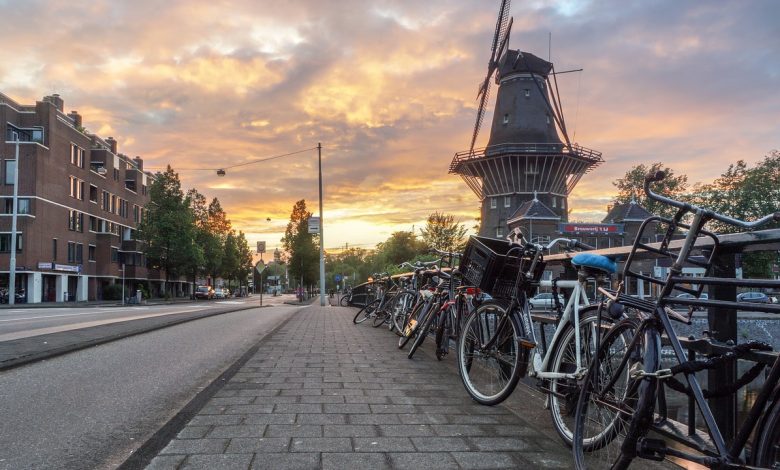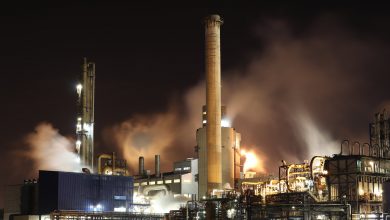Should the U.S. Adopt a Dutch Transportation System to Reduce Oil Consumption?

Sustainability in the Netherlands
The Netherlands is known as a country that takes great pride in initiatives to enhance sustainability and reduce energy consumption. For years, the Dutch have been leading the world in efforts to reduce carbon emissions from fossil fuel consumption. Through a series of initiatives related to sustainable transportation planning, renewable energy generation, and green industrial practices, the Netherlands has become a model for an eco-friendly lifestyle. While the Dutch are known to have led innovation efforts to reduce energy consumption through a broad range of sustainability plans, they are most well known for leading the world in sustainable transportation planning. As a result of their efforts to promote alternative forms of transportation, the Dutch are on the path to completely remove fossil fuels from their transportation sector.
When compared to the United States, the Netherlands has been moving forward with much more ambitious plans to reduce fossil fuel consumption. In addition to working to implement plans to become a carbon-neutral country, the Dutch have already been making significant strides to eliminate all fossil fuel-powered buses by 2025. Moreover, the Netherlands has also revealed a plan to remove all vehicles powered by fossil fuels from the country’s roads by 2030. On the other hand, the U.S. has continued to resist pressure from the international community to reduce emissions from fossil fuels, particularly from the transportation sector. The American system of mass motorization is one of the most carbon-intensive transportation systems in the world. Because of this, some city planners and environmentalists have been calling for the U.S. to follow the Dutch’s lead when it comes to transportation planning.

Bicycling for Transportation
The U.S. is lagging far behind the Netherlands when it comes to using the bicycle as a practical form of transportation. Amsterdam, the Netherlands’ largest city, is known as the bicycle capital of the world. Conversely, with only one percent of all trips made traveled by bicycle in 2009, the U.S. has one of the lowest rates of cycling in the world (BBF, 2012). During the year 2008, biking accounted for 38 percent of all vehicle trips in Amsterdam, which is an astonishing portion that is unmatched by any other European city of equivalent size (Buehler, 2013). It has grown to become one of the most bike-friendly cities in the world because of government support that has contributed to promoting an active and ideal environment to support cyclists. Supporting bicycle travel over travel by personal automobile has significantly reduced Dutch dependence on fossil fuels within the country’s transportation system.
Amsterdam flaunts a widespread network of safe and advantageous bicycle routes around the city to make biking easy and accessible for all residents. On the other hand, the U.S. lacks adequate infrastructure to make biking effortless and accessible for most Americans. Furthermore, unlike the Netherlands, America is spatially organized to support a car-dependent society that hinders the use of alternative forms of transportation such as the bicycle. Bicycles in Amsterdam currently account for about 50 percent of the city’s traffic, which is a scenario that is not experienced by any U.S. city (Van Der Zee, 2015). As a result of increasing rates of bicycle usage, Amsterdam has improved road safety for cyclists to give it one of the lowest bicycle accident rates in the world (Van Der Zee, 2015).

What do City Planners Say?
City planners say that the Dutch have benefited greatly from cycling as a form of daily transportation. Americans on the other hand, have failed to adopt high rates of cycling because of geography and sociological norms that have caused its citizens to view bicycling as only a form of exercise. The Dutch say that cycling has significantly benefited their transportation system because it has promoted environmental, social, and economic sustainability (Buehler, 2010). Biking requires much less non-renewable energy resources than any motorized form of transportation, while it also produces practically no noise or air pollution.
In addition to reducing the need for fossil fuels within transportation systems, the health benefits from riding a bicycle are also commendable. Bicycling contributes to daily physical activity and cardiovascular health, which can protect against obesity, diabetes, and numerous other diseases. Besides promoting a healthy lifestyle, biking reduces traffic congestion and is economically more affordable than owning and maintaining a private car or using public transportation in both direct user fees and municipal infrastructure costs (Buehler, 2010). Most Americans are unable to experience these advantages to biking because it is simply not feasible to do so in many U.S. cities and towns.

A Fossil Fuel-Powered Society
The U.S. has developed in a way that supports a fossil fuel-powered society that has aided mass motorization instead of cycling. As a result of car-dependent city planning in the U.S., the automobile has become the most common form of daily transportation. Without personal automobiles, the vast majority of Americans would not be able to access common amenities. American political leaders have reinforced this system of mass motorization by funding the construction of more highways and freeways than any other county in the world (Jones, 2008).
Geography partially explains why the U.S. relies on the automobile much more than the bicycle. Americans live spread out across a much broader landscape than Europeans (Shorto, 2011). This requires them to spend an average of 55 minutes per day in the car (BBF, 2012).Even if bicycle routes were constructed from the suburbs to the cities where most people work, people would be reluctant to use them because of the vast distance that it would require people to cycle. Today, nearly 60 percent of all American bike trips are only one mile or less (BBF, 2012). However, geography isn’t the only reason why Americans don’t cycle as much as the Dutch.
Why Americans Don’t Ride Bikes
Sociological norms have caused Americans to view bicycling as a form of exercise and recreation. Conversely, a shift in attitudes has taken place in numerous parts of Europe that have made people view cycling as a vital form of urban mass transportation (Rosenthal, 2011). Typical photographs of American cyclists would usually convey young people in exercise attire, while photographs of European cyclers often portray men and women of all ages in suits and dresses bound for workplaces (Rosenthal, 2011). Culturally, bicycles are not recognized as a legitimate form of transportation by Americans. For example, New York City has built new state-of-the art bike paths in hope that commuters will use them and ease traffic congestion in the city. However, the paths remain virtually empty, even during rush hour. Until Americans start thinking of biking as an essential form of transportation instead of just a hobby, the bike paths will continue to be sparsely populated (Rosenthal, 2011).

The Netherlands Before the Arab Oil Embargo
While the Netherlands is now known as a model for reducing oil consumption from transportation systems, the country has not always been an alternative transportation leader. Prior to the 1973 Arab Oil Embargo, the Netherlands was moving towards a transportation system dominated by personal vehicles. Oil was a vital resource for the Dutch economy, particularly for the transportation sector. While Amsterdam’s streets are currently dominated by cyclists, they used to be dominated by automobiles. However, when the Arab Oil Embargo caused gas prices to spike tremendously in the Netherlands, city planners and political leaders began to implement efforts to move away from a transportation system that was dependent on fossil fuels.
The 1973 Arab Oil Embargo crippled the Dutch economy. Since the country was so dependent on oil, high oil prices created impacts that rippled through the entire economy. In addition to high fuel prices, extended fuel shortages rendered cars useless in the Netherlands’ capital city. When people were unable to fuel up their cars, they started to resort to alternative forms of transportation, which ended up becoming a lasting feature of Dutch life. As the government noticed how people were using other modes of transportation, government officials decided to fund permanent bike-related infrastructure improvements to encourage more biking in the future. This shift in government funding has allowed the Netherlands to dramatically reduce the need for oil to power its transportation system.

Diverging Transportation Policies
While the Netherlands began to implement bike-related infrastructure improvements following the Arab Oil Embargo, the U.S. government continued to fund the development of more car-oriented infrastructure. These diverging transportation policies have led the U.S. to become one of the most oil-dependent countries in the world, while the Netherlands is on track to eventually remove all fossil fuels from its economy. Overall, the U.S. is trailing far behind the Netherlands and the rest of the world when it comes to using the bicycle as a form or transportation because of government policies, geographic constraints, and sociological issues.
Geography plays a key role in many Americans not being able to access bike paths. American infrastructure is simply too spread out to accommodate cycling as a form of mass transportation. On the other hand, European cities like Amsterdam had to seek out alternative forms of transportation such as the bicycle because these cities could not support mass motorization. As a compromise, European governments supported bike path developments which has even included special traffic signals to support cyclists. In fact, the city of Amsterdam has restricted car access to the center city so that many streets strictly serve pedestrians and cyclists (Buehler, 2010).

The Intergovernmental Panel on Climate Change
Many critics of alternative forms of transportation say that bicycling is not an effective way to reduce fossil fuel consumption. Instead, some city planners and transportation professional say that shifting towards electric vehicles may be the only viable option to reduce emissions from the transportation sector. However, the Intergovernmental Panel on Climate Change (IPCC) recently published a globally significant report that outlines how bicycling may represent a key opportunity to reduce oil consumption. The IPCC, which was established by the World Meteorological Organization and the United Nations Environment Program in 1988, says that supporting non-motorized transportation will be necessary to combat climate change.
The IPCC report highlighted upwards of 6,000 scientific references related to studies that showed how policies aimed at restricting cars and supporting bicyclists could reduce vehicle traffic and lessen global carbon emissions (Reid, 2018). The report specifically outlined the importance of bike-sharing systems to encourage more bicycling in cities. There are currently over 800 cities worldwide that have operational bike-sharing systems (Reid, 2018). If more cities begin to shift programs and funding to support active transportation systems, air pollution and fossil fuel consumption from the transportation sector would be expected to fall.
Outlook for the Future
Despite America’s setbacks, some city planners and environmentalists still think it is possible to increase the percentage of bike users in this country, thereby reducing American fossil fuel consumption. If city planners and local governments develop plans and policies that prioritize cycling rather than cars, more Americans will use the bicycle as a form of transportation. Furthermore, bicycle advocates say that car-free zones, ample bike parking, and showers at workplaces would provide additional support for biking in America. The Dutch view cycling as much more than just a hobby. Unless Americans formulate a similar view, the U.S. will continue to depend on mass motorization fueled by fossil fuels rather than less carbon-intensive alternative forms of transportation.
Sources
BBF. (2012). “Bikes Belong Statistics.” Bikes Belong Foundation.
Buehler, R. (2010). “Sustainable Communities.” Rutgers University.
Jones, D. (2008). “Mass Motorization & Mass Transit.” Indiana University Press.
Reid, C. (2018). “Bicycling Could Help Save The Planet, Says IPCC Climate Report.” Forbes.
Rosenthal, E. (2011). “On Biking, Why Can’t the U.S. Learn Lessons from Europe?.” Yale University: Yale Environment 360.
Shorto, R. (2011). “The Dutch Way: Bicycles and Fresh Bread.” The New York Times.
Van Der Zee, R. (2015). “How Amsterdam became the bicycle capital of the world.” The Guardian.



